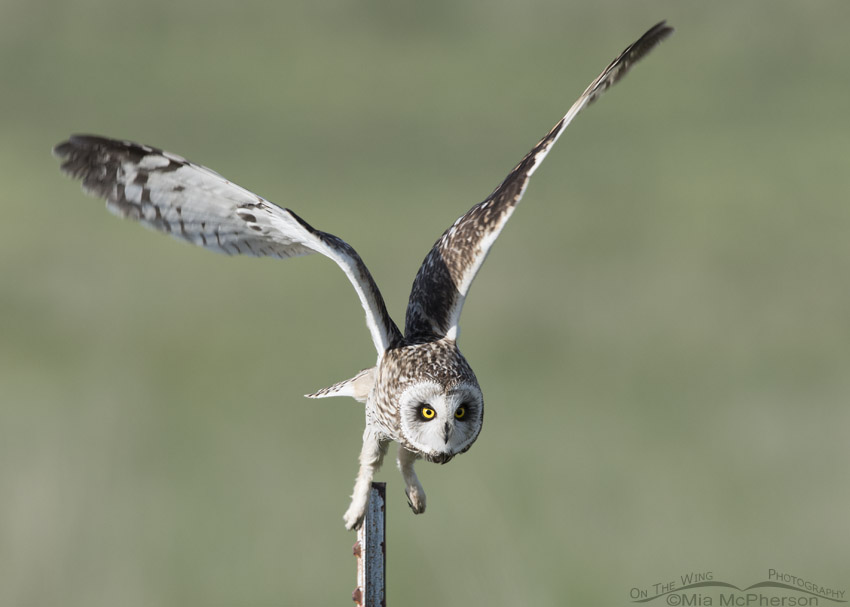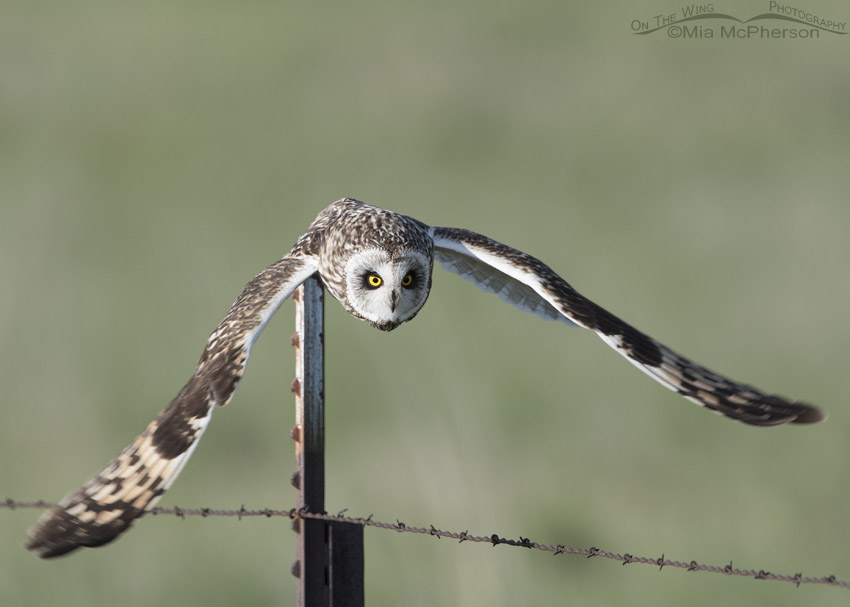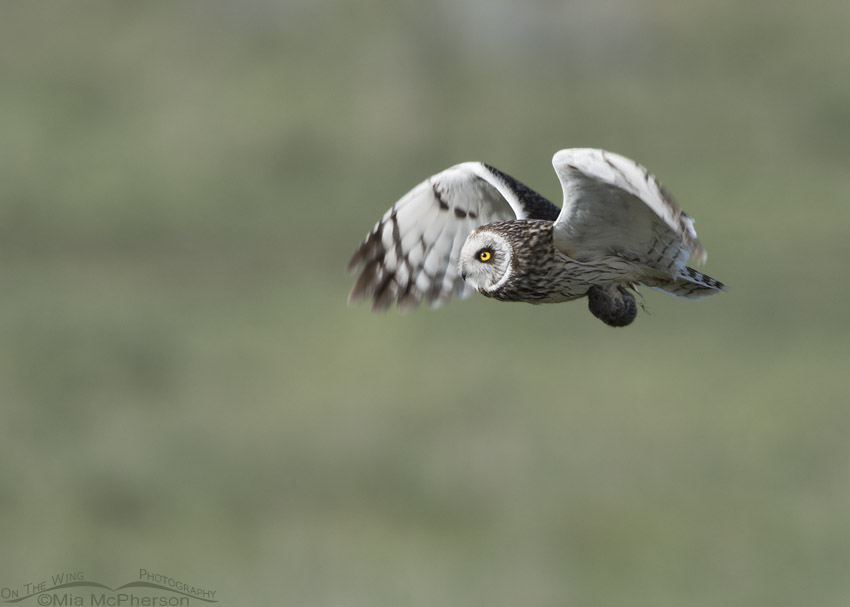 Male Short-eared Owl lifting off from a metal post – Nikon D500, f7.1, 1/1000, ISO 400, Nikkor 500mm VR with 1.4x TC, natural light, not baited
Male Short-eared Owl lifting off from a metal post – Nikon D500, f7.1, 1/1000, ISO 400, Nikkor 500mm VR with 1.4x TC, natural light, not baited
It was May 18th when I spotted my first Short-eared Owl chick of 2016 on the ground in northern Utah, Short-eared Owls were plentiful and easy to find last year but this year because of their nomadic behavior they have been much harder for me to find, it seems most of them have moved to other locations. I’ve only seen a few in the past couple of weeks and most of them have been very skittish or were seen from a long distance.
There have been a few Short-eared Owls that I have kept seeing in the same locations over a period of about a month and yesterday I believe that I saw and photographed a male Short-eared Owl hunting for prey for his chicks.
 Head on lift of from a male Short-eared Owl – Nikon D500, f7.1, 1/1000, ISO 400, Nikkor 500mm VR with 1.4x TC, natural light, not baited
Head on lift of from a male Short-eared Owl – Nikon D500, f7.1, 1/1000, ISO 400, Nikkor 500mm VR with 1.4x TC, natural light, not baited
The Short-eared Owl perched on some metal fence posts next to the road and three different times I saw him dive down from the pole into the grasses below it after prey. On one dive he moved so fast I was unable to keep my focus on him and in every image parts of his wings or body were clipped, another dive for prey had him take off with his back to me.
 Male Short-eared Owl diving for prey – Nikon D500, f7.1, 1/1000, ISO 400, Nikkor 500mm VR with 1.4x TC, natural light, not baited
Male Short-eared Owl diving for prey – Nikon D500, f7.1, 1/1000, ISO 400, Nikkor 500mm VR with 1.4x TC, natural light, not baited
On one of this Short-eared Owl’s dives for prey I was able to lock on as he lifted off from the fence post and dove to the ground after prey with his wings fully spread. These owls move fast when they go after prey.
 Male Short-eared Owl in flight with prey – Nikon D500, f7.1, 1/1000, ISO 400, Nikkor 500mm VR with 1.4x TC, natural light, not baited
Male Short-eared Owl in flight with prey – Nikon D500, f7.1, 1/1000, ISO 400, Nikkor 500mm VR with 1.4x TC, natural light, not baited
The time of the year is right for there to be Short-eared chicks on the ground moving around, they leave their nests at about 12 to 18 days old and there is a short period of time when the chicks are flightless but walking around to avoid predators and to explore their world. Until the chicks fledge and are able to hunt on their own the adults hunt and bring food to their chicks. They are very vulnerable during this time.
While the male Short-eared Owl missed on three attempts to catch prey he was successful his fourth try and as soon as he had the prey grasped firmly in his talons he flew quickly away.
I spent a great deal of time last year observing and photographing Short-eared Owl adults and chicks and learning their behaviors and I’d say this male was heading to where the hidden chicks were to bring them a meal. The area is wide open and even with my keen eyes I was unable to spot any Short-eared Owl chicks. In a couple of days the chicks, if there are any, will begin to use their long wings more and will soon learn to fly and I might be able to spot and photograph them. I love these birds!
Life is good.
Mia
Click here to see more of my Short-eared Owl photos plus facts and information about this species.
Ethics on photographing nesting birds:
- Do not approach too closely;
- If the birds show any sign of distress, back away;
- Don’t trim leaves, twigs or branches to get a clearer shot, you may inadvertently attract predators or cause the eggs/chicks to over heat;
- Follow local, state and federal guidelines concerning nesting birds;
- Don’t harass the birds to get an action shot;
- Don’t stay a long time with nesting birds or chicks, that disrupts their normal behavior;
- Always remember that your scent may draw predators to the area of nesting birds or birds with chicks.
For more information on the ethics of photographing nesting birds or chicks check out the Principles of Birding Ethics published by the American Birding Association.
At this time of the year we should be careful where we step, where we drive and how closely we approach nests and chicks, it is very important not to stress the chicks or adults. The subject is always more important than the images.


I didn’t realize they left the nest in such a short amount of time, unlike other raptors.
Beautiful, beautiful images. And bird.
I love in-flight images, beautiful!
Huge WOW factor here! Really cool pics Mia.
Right on. Beautiful images, Mia
These are amazing!